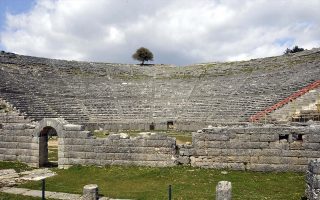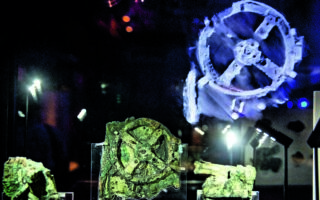Visiting Greece’s archaeological sites may be tricky on Thursday morning, after the union representing antiquities guards, PEYFA, announced a four-hour strike starting at 8 a.m.
ARCHAEOLOGY
Archaeology and art history lovers had a rare opportunity last week to witness in China a so-called “dialogue” between two of the most remarkable works of ancient art in the world.
Cyprus on Monday put on display artifacts – some of them thousands of years old – that were returned after a Turkish art dealer looted them from the ethnically divided island nation decades ago.
Greek President Katerina Sakellaropoulou officiated at the inauguration of the renovated Archaeological Museum of Delos, one of the country’s most important archaeological sites, on Friday.
The opening hours of some archaeological sites and monuments across the country will be adjusted for this weekend (July 20 – 21) due to the heatwave, the Ministry of Culture announced on Friday.
The ancient Acropolis tourist site will remain closed from midday until 5 p.m. on Wednesday due to extreme heat wave temperatures, authorities announced. The decision was made to protect both workers and visitors.
Poseidon cooperated this time around. The ancient Greek god blessed the archaeologists, divers and scientists in their latest mission to the Antikythera wreck with smooth seas.
Two plundered marble vases that marked ancient Athenians’ graves more than 2,000 years ago, including one with an emotional family scene, have been returned to Greece from Switzerland.
The Antikythera mechanism, an ancient Greek hand-powered orrery, which is the oldest known analog computer, followed the Greek lunar calendar, not the solar one used by the Egyptians as previously believed.
The everyday life of the inhabitants of the southern cliff of the Acropolis Rock is presented in “the museum under the museum,” the new space of the Acropolis Museum that opened to the public on Wednesday.
When scientists in the 1960s excavated the wreck of an ancient Greek merchant ship off the northern coast of Cyprus, what they found was an amazing time capsule from a pivotal period in the Mediterranean world following the death of Alexander the Great.
An exhibition of more than 1,100 artefacts, from statues and table games to children’s toys, found in an ancient Athens neighborhood during excavations in the area of its modern Acropolis Museum has opened to the public.
It took persistence, love – and a fit of anger. These were the ingredients that led to the transformation of the Ancient Theater of Orchomenos in Boeotia (Viotia), central Greece from a forgotten site to a model of restoration, sponsored by the local residents.
The Ministry of Culture on Thursday announced the start of work to protect the site, staff and guests of a stunning castle built by the Franks in 1220 in Ilia in the northern Peloponnese from wildfire.
Archaeological sites in Athens will remain closed for five hours on Thursday to protect tourists from the searing heat that continued for a third day.
Greece shut the ancient Acropolis tourist site, suspended schools and stationed medics across Athens on Wednesday as it faced the first heatwave of the summer.















